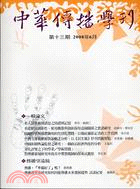 閱覽人數: 2073
閱覽人數: 2073
June
2008
No. 13
頁數:37 - 73
作者(中)
胡婉玲、蔡明宏
作者(英)
Anne Wan-Ling Hu & Ming-Hone Tsai
關鍵詞(中)
好奇心 ; 使用率 ; 使用多元性 ; 創造力技能 ; 創新採用意圖
關鍵詞(英)
curiosity ; rate of use ; variety of use ; creativity skills ; intention to adopt innovation
中文摘要
物品使用階段的人格創新性,因能具體延伸創新擴散,並帶動下一階段的採用創新,近來成為採用後創新擴散(post-adoption innovation diffusion)研究的重要課題。本研究援引創造力組成理論,重新解構Price & Ridgway (1983)提出的「使用創新性」,以甫由2G飽和市場跨入3G世代之電信服務業使用者為實證對象,經線性結構方程式分析,證實使用創新性乃「好奇心」與「創造力技能」兩異質構念的組合。此二者對使用擴散與創新採用意圖展現不同效果:好奇心乃關鍵因子,直接驅動創新採用意圖,並促使個人展現創造力技能,而創造力技能則與使用擴散具顯著正向關聯。
英文摘要
Post-adoption innovation diffusion is an important area of research that has illuminated consumer innovativeness in product use and extended innovation diffusion. The scale of use innovativeness (UI) proposed by Price & Ridgeway (1983) has produced inconsistent results for the rate-of-use and variety-of-uses for a given product due to the heterogeneity of UI components. This study references the componential theory of creativity to redefine the concept of UI. An SEM comparative model analysis demonstrated that UI should include 2 heterogeneous constructs: curiosity and creativity skills. Curiosity can influence users to accept innovative technologies, while creativity skills influence the degree of product usage. Curiosity is the key to an individual's tendency for new technology adoption and also promotes learning and creative thinking, which in turn leads to the emergence of creativity skills. Through creativity skills, curiosity indirectly promotes use diffusion.